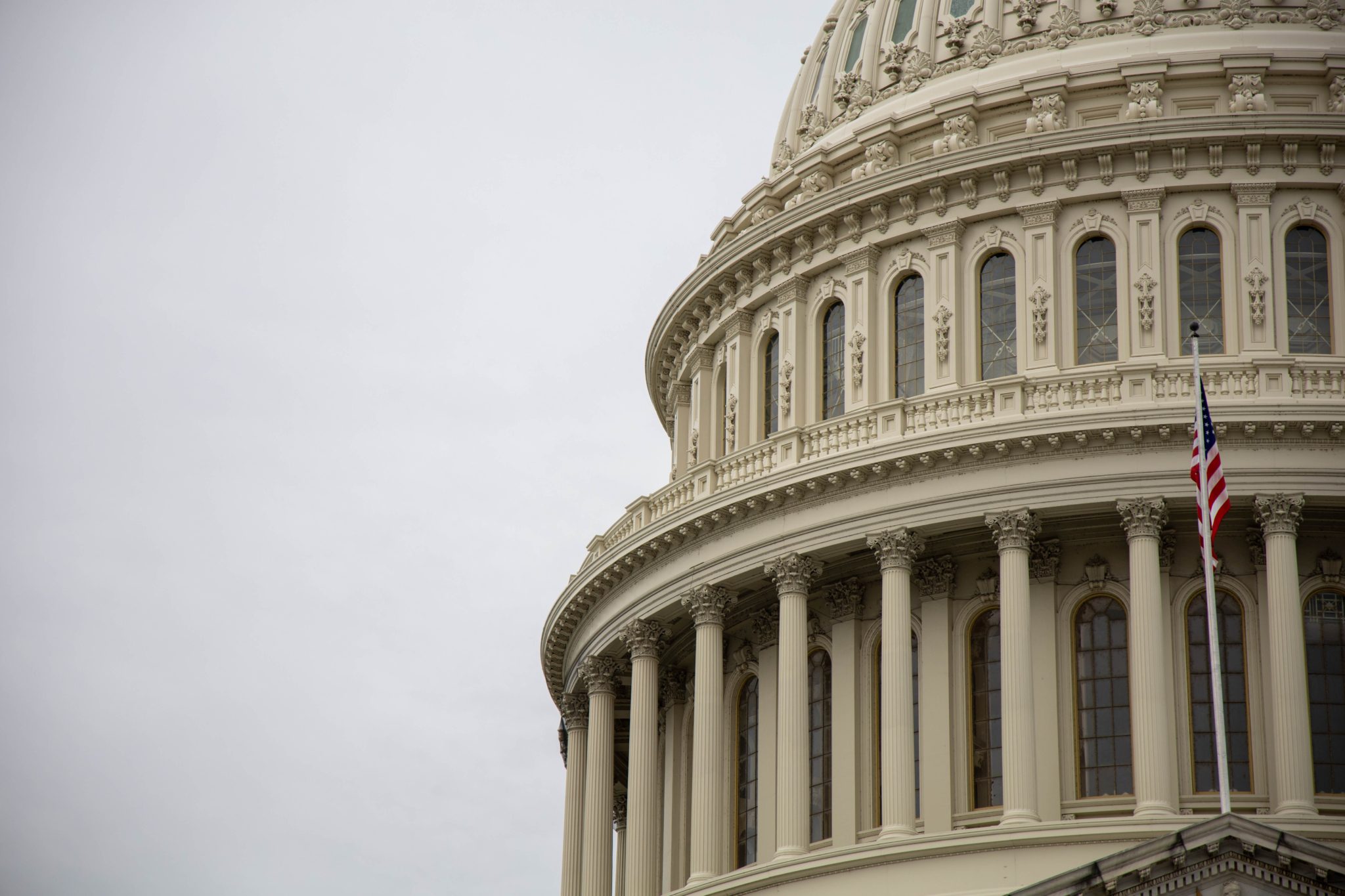[vc_row css=”.vc_custom_1613969641676{padding-top: 40px !important;padding-bottom: 40px !important;}”][vc_column][vc_column_text]The following are highlights and selected provisions of relevance to the nonprofit sector, as passed by the U.S. Senate on March 6, 2021.
Jump to:
- Small Business Administration (SBA) Programs
- Unemployment Insurance
- Tax Credits for Organizations
- Assistance to Individuals
- Civic and Community Infrastructure
- State and Local Government Support – $362 billion
- Other Provisions
[/vc_column_text][/vc_column][/vc_row][vc_row full_width=”stretch_row” css=”.vc_custom_1613968534788{padding-top: 60px !important;padding-bottom: 60px !important;background-color: #f3f8fa !important;}” el_id=”SBA”][vc_column][vc_column_text]
Small Business Administration (SBA) Programs
Expanded nonprofit eligibility for Paycheck Protection Program (PPP)
Makes charities eligible for PPP if they employ not more than 500 employees per physical location.
Establishes a new eligibility category for an “additional covered nonprofit entity”, which includes any nonprofit that is NOT listed in section 501(c)(3), 501(c)(4), 501(c)(6), or 501(c)(19), receives and spends less than 15% of its receipts and expenses on lobbying, spends less than $1 million on lobbying, and employs not more than 300 employees.
Additional funding for Paycheck Protection Program
Provides an additional $7.25 billion in funding for PPP and increases the total program level to $813.7 billion.
Targeted EIDL Advance
Provides an additional $15 billion for the Targeted Economic Injury Disaster Loan (EIDL) Advance program and directs SBA to make $5 billion of any remaining funding available for supplemental grants to “severely impacted” organizations that have suffered an economic loss of greater than 50% and have ten employees or fewer. Exempts EIDL grants from tax.
Community Navigator Pilot Program
Provides $100 million for community navigator grants, and $75 million for outreach and education. Allows for grants to, or contracts or cooperative agreements with, private nonprofit organizations, SBA resource partners, states, tribes, and units of local government to ensure the delivery of free community navigator services to improve access to assistance programs and resources made available because of the COVID–19 pandemic. The funds are available until September 30, 2022.
Shuttered Venue Operators
Provides an additional $1.25 billion for the SBA Shuttered Venue Operators Grant Program, including a $500,000 set aside for technical assistance to help entities apply for grants. Allows eligible applicants to apply for PPP and SVOG but reduces SVOG by the amount received through PPP. This change is necessary to ensure that eligible applicants are not forced to forgo the SVOG due to the program’s delayed start date and the March 31, 2021 expiration of PPP.
SBA Administrative Funding
Provides $840 million for administrative costs to prevent, prepare, and respond to the COVID–19 pandemic, including expenses related to PPP, aid to Venues, and grants to restaurants. Provides $460 million for the disaster loan program, of which $70 million is for the cost of direct loans and $390 million is for administrative costs. Provides $25 million for SBA’s Office of Inspector General for oversight.[/vc_column_text][/vc_column][/vc_row][vc_row full_width=”stretch_row” css=”.vc_custom_1613968838010{padding-top: 60px !important;padding-bottom: 60px !important;}” el_id=”Unemployment”][vc_column][vc_column_text]
Unemployment Insurance
Extension and Increase in Relief for Governmental Entities and Nonprofit Organizations
Extends the subsidy for costs incurred by employers who provide unemployment benefits on a reimbursable basis, rather than via tax contributions through September 6, 2021. Increases the subsidy from 50% to 75% for weeks beginning after March 31.
Extension of Pandemic Unemployment Programs
Extends both the Federal Pandemic Unemployment Compensation (FPUC) program and Pandemic Emergency Unemployment Compensation (PEUC) through September 6, 2021. Eliminates a House-passed increase of the FPUC amount, which will remain at $300. Increases the number of weeks of benefits an individual worker may receive in the PEUC program from 24 to 53.
Tax Deductibility of Unemployment Insurance Benefits
For the purposes of 2020 taxes, excludes the first $10,200 of unemployment insurance benefits from an individual’s gross income.[/vc_column_text][/vc_column][/vc_row][vc_row full_width=”stretch_row” css=”.vc_custom_1613968617247{padding-top: 60px !important;padding-bottom: 60px !important;background-color: #f3f8fa !important;}” el_id=”Tax”][vc_column][vc_column_text]
Tax Credits for Organizations
Credits for Paid Sick and Family Leave
Extends the paid sick time and paid family leave credits created by the Families First Coronavirus Response Act from March 31, 2021 through September 30, 2021. Increases the amount of wages for which an employer may claim the paid family credit in a year from $10,000 to $12,000 per employee and increases the number of days for which self-employed individuals can claim the credit from 50 to 60. Expands eligible leave to include time taken to receive or recover from a COVID-19 vaccine.
Employee Retention Tax Credit
Extends the employee retention tax credit through December 31, 2021. Allows the hardest hit organizations to count all wages paid as qualifying wages, not just those wages paid to employees that are not providing services. Modifies the credit such that, beginning after June 30, 2021, the credit can only be claimed against the hospital insurance tax to comply with the budget reconciliation process.[/vc_column_text][/vc_column][/vc_row][vc_row full_width=”stretch_row” css=”.vc_custom_1613968854713{padding-top: 60px !important;padding-bottom: 60px !important;}” el_id=”Assistance”][vc_column][vc_column_text]
Assistance to Individuals
Recovery Rebates
Provides a payment of $1,400 for a single taxpayer ($2,800 for joint filers), in addition to $1,400 per dependent. The credit phases out between $75,000 and $80,00 of adjusted gross income ($112,500 and $120,000 for head of household filers and $150,000 and $160,000 for joint filers). For purposes of this payment, a dependent includes both children and non-child dependents. Mixed-status households may receive payments for each individual with a valid identification number.
Child Tax Credit enhancements for 2021
Makes the child tax credit fully refundable for 2021 and increases the amount to $3,000 per child ($3,600 for a child under age 6). Increases the age of qualifying children by one year for 2021, such that 17-year-olds qualify for the credit. The enhanced credit begins to phase out for adjusted gross income in excess of $150,000 for joint filers ($112,500 for head of household filers and $75,000 for other filers).
“Childless” Earned Income Tax Credit strengthened and expanded
Reduces the minimum age to claim the childless EITC from 25 to 19 and eliminates the upper age limit. Increases the credit percentage from 7.65% to 15.3% and the income at which phaseout begins to $11,610 for non-joint filers. These changes increase the maximum credit amount from $543 to $1,502.
Child and Dependent Care Tax Credit enhancements for 2021
Makes the CDCTC fully refundable and increases the maximum credit rate to 50%. Amends the phaseout threshold to begin at $125,000 instead of $15,000. Increases the amount of child and dependent care expenses that are eligible for the credit to $8,000 for one qualifying individual and $16,000 for two or more qualifying individuals.[/vc_column_text][/vc_column][/vc_row][vc_row full_width=”stretch_row” css=”.vc_custom_1613968685479{padding-top: 60px !important;padding-bottom: 60px !important;background-color: #f3f8fa !important;}” el_id=”Civic”][vc_column][vc_column_text]
Civic and Community Infrastructure
Broadband access and devices – $7.2 billion through the establishment of an Emergency Connectivity Fund. The fund will provide support to eligible schools and other organizations to provide eligible connected devices, internet service, and hotspots to students and teachers for internet use at home.
Low Income Home Energy Assistance Program (LIHEAP) – $4.5 billion to help families afford home heating and cooling costs.
Federal Transit Administration – $30 billion to assist with operating costs, including payroll and personal protective equipment.
Child Care Entitlement for States – $3.55 billion per year, of which $100 million shall be available for tribal organizations and $75 million shall be available for grants to territories.
Child Care and Development Block Grant (CCDBG) Program – $15 billion in additional funding through September 30, 2021.
Child Care Stabilization – $24 billion to CCDBG lead agencies, to award subgrants to qualified child care providers that are either open and available to provide services or closed for reasons related to COVID-19. Allowable uses include personnel expenses, cleaning supplies and personal protective equipment, and mental health supports. Providers receiving funds must make certain certifications, including following CDC guidelines, paying full employee compensation, and providing tuition relief to families in need of assistance.
Corporation for National and Community Service – $1 billion, of which $620 million will support an increase in AmeriCorps volunteers to respond to communities impacted by COVID-19. Grants will be prioritized based on grantees serving communities disproportionately impacted by COVID-19 and considering the diversity of communities and participants served by such entities, including racial, ethnic, socioeconomic, linguistic, or geographic diversity.
National Endowment for the Arts – $135 million, 40% to state agencies and 60% direct grants.
National Endowment for the Humanities – $135 million, 40% to state agencies and 60% direct grants.
Institute of Museum and Library Services – $200 million
Native American Language Preservation – $20 million[/vc_column_text][/vc_column][/vc_row][vc_row full_width=”stretch_row” css=”.vc_custom_1613968884720{padding-top: 60px !important;padding-bottom: 60px !important;}” el_id=”StateLocal”][vc_column][vc_column_text]
State, Local, and Tribal Government Support – $362 billion
Assistance to State Governments and District of Columbia – $195.3 billion
Assistance to Local Governments – $130.2 billion
Assistance to Tribal Governments – $20 billion
Assistance to Territorial Governments – $4.5 billion
Pandemic Premium Pay – Among the allowable uses of these funds, up to $13 per hour extra may be paid to workers “needed to maintain continuity of operations of essential critical infrastructure sectors and additional sectors” as designated by a governor or tribal government.
Coronavirus Capital Projects Fund – $10 billion to states, territories, and tribal governments to carry out critical capital projects directly enabling work, education, and health monitoring, including remote options, in response to the public health emergency. A minimum of $100 million will go to each state, Puerto Rico, and the District of Columbia.
Local Assistance and Tribal Consistency Fund – $2 billion to counties and tribal governments that face a negative revenue impact due to a federal program or changes to a federal program.[/vc_column_text][/vc_column][/vc_row][vc_row full_width=”stretch_row” css=”.vc_custom_1613968792715{padding-top: 60px !important;padding-bottom: 60px !important;background-color: #f3f8fa !important;}” el_id=”Provisions”][vc_column][vc_column_text]
Other Provisions
Higher Education Emergency Relief Fund – $39.6 billion
Elementary and Secondary School Emergency Relief Fund – $122.8 billion
Emergency Assistance to Non-Public Schools – $2.75 billion
Indian Health Service – $6.1 billion
Bureau of Indian Education – $850 million
Supplemental Nutrition Assistance Program (SNAP) – Extends 15% SNAP benefit increase through September 30, 2021.
Special Supplemental Nutrition Program for Women, Infants, and Children (WIC) – $390 million for outreach, innovation, and program modernization. Also provides the Secretary of Agriculture with authority and funding to temporarily boost the Cash Value Voucher (CVV) up to $35 per month for women and children for a four-month period during the COVID-19 pandemic.[/vc_column_text][/vc_column][/vc_row]



